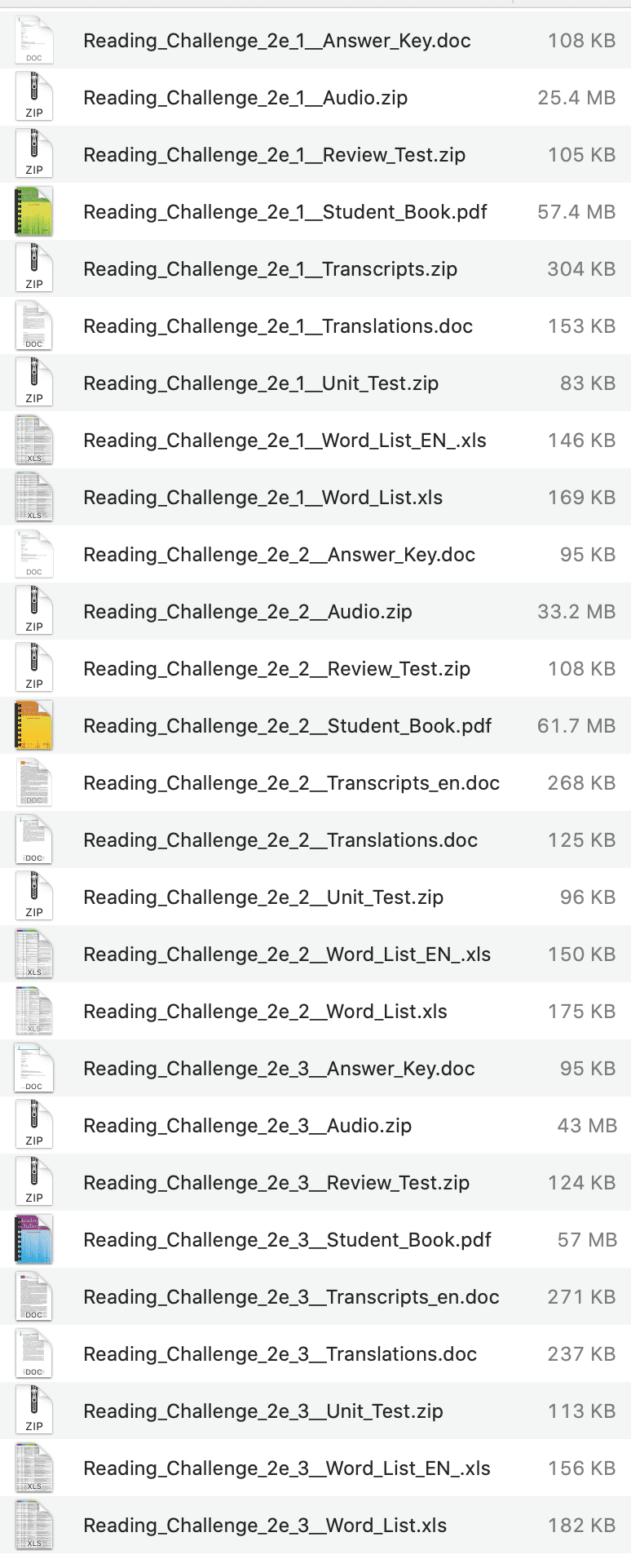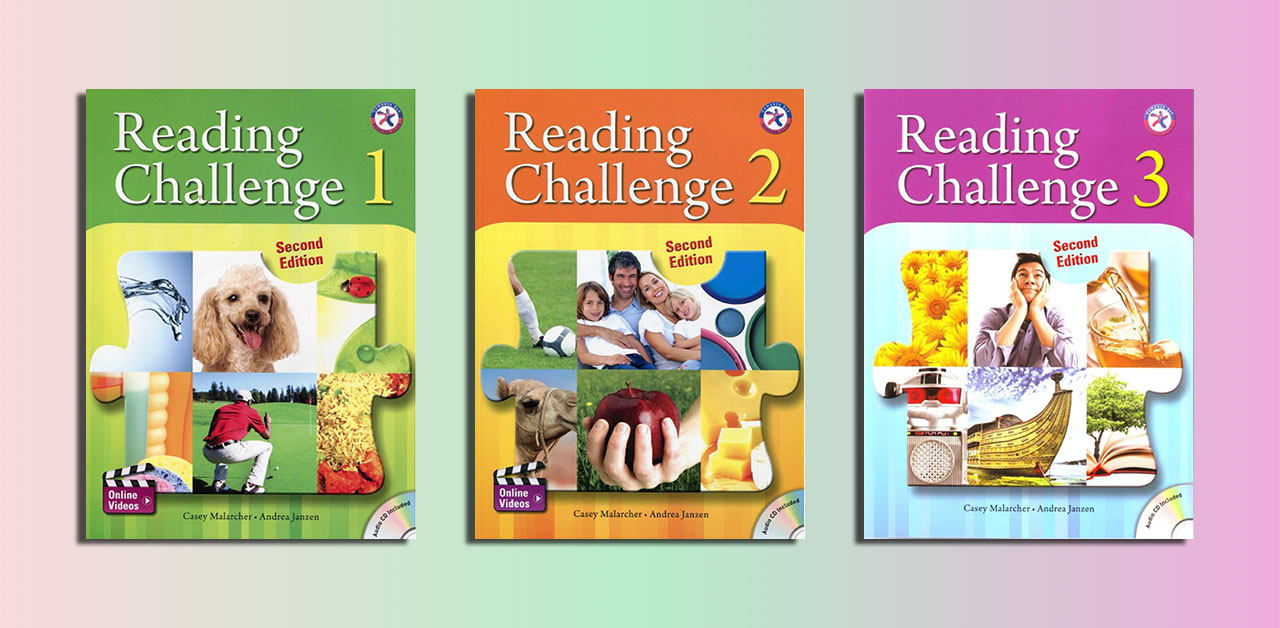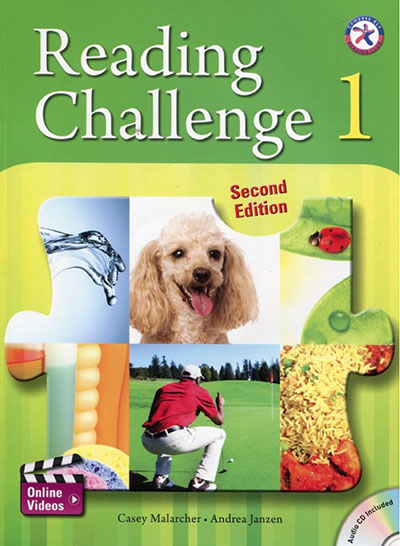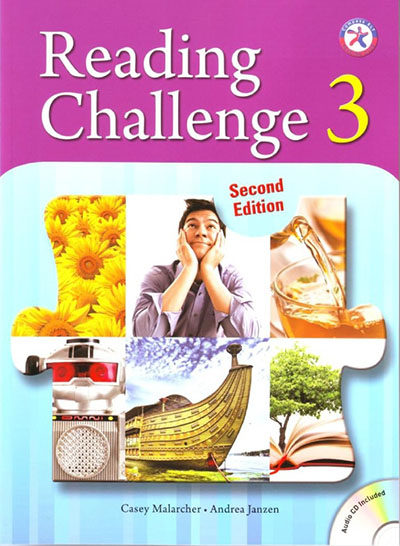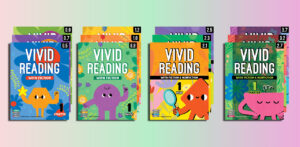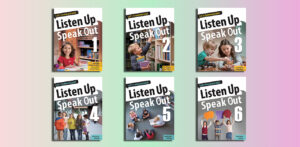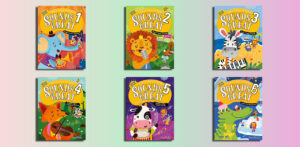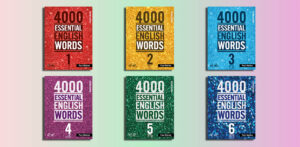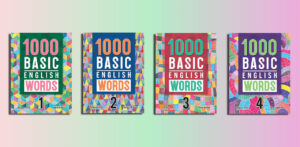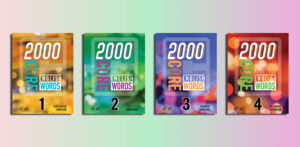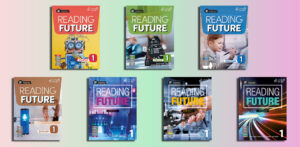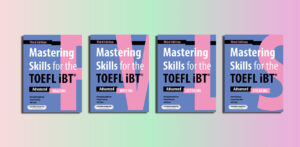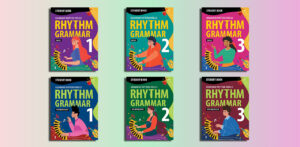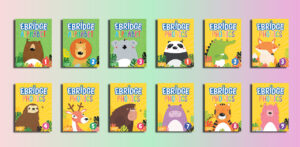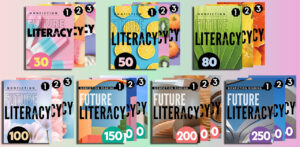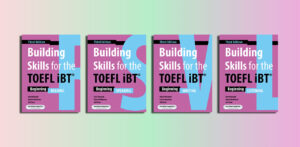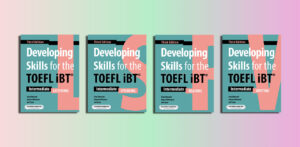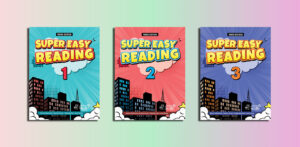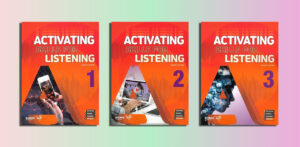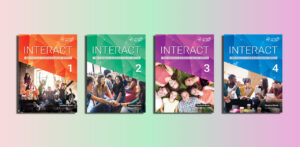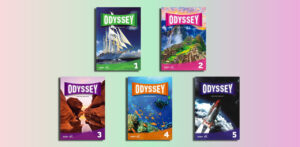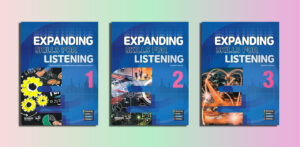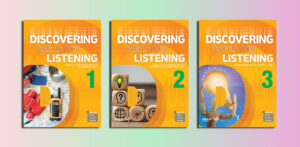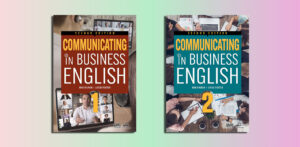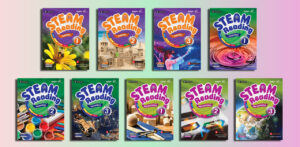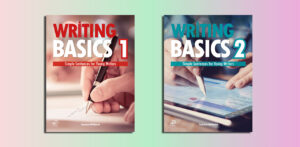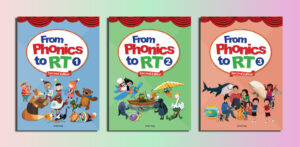Reading Challenge (PDFs, Resources)
Level 1 (B1 / B1+)
Answer Key – Audio – Review Test – Student Book – Transcripts – Translations – Unit Test – Word List
Reading Challenge 1 Student Book.pdf – Sample: Click
Level 2 (B1+ / B2)
Answer Key – Audio – Review Test – Student Book – Transcripts – Translations – Unit Test – Word List
Reading Challenge 2 Student Book.pdf – Sample: Click
Level 3 (B2 / B2+)
Answer Key – Audio – Review Test – Student Book – Transcripts – Translations – Unit Test – Word List
Reading Challenge 3 Student Book.pdf – Sample: Click
| Name | Price | Buy |
|---|---|---|
| Reading Challenge 1 (PDFs, Resources) | $5 | |
| Reading Challenge 2 (PDFs, Resources) | $5 | |
| Reading Challenge 3 (PDFs, Resources) | $5 | |
| Reading Challenge - All 3 Levels (PDFs, Resources) | $12 |
Overview of the “Reading Challenge” by Compass Publishing
Contents
| ✅ Coursebook: | Reading Challenge |
| ✅ Authors: | Casey Malarcher, Michael Pederson |
| ✅ Publisher: | Compass Publishing |
| ✅ English type: | International English |
| ✅ Levels: | B1, B1+, B2, B2+ |
| ✅ Skill: | Reading |
| ✅ For: | Secondary, Junior High School, High School, Adult |
| ✅ Publication year: | 2010 |
The Reading Challenge series by Compass Publishing is a three-book, non-fiction reading program meticulously crafted for English language learners (ELLs) ranging from high-beginner to intermediate proficiency levels. This engaging series aims to bolster reading fluency, vocabulary acquisition, and comprehension skills while introducing learners to a variety of real-world topics. With its structured approach and supplementary materials, Reading Challenge is a versatile resource suitable for both classroom instruction and self-study. Below, we explore the key features, structure, and benefits of this acclaimed series.
About Compass Publishing
Compass Publishing is a globally recognized publisher specializing in English language teaching (ELT) materials. Known for producing high-quality resources tailored to learners at various proficiency levels, Compass Publishing emphasizes practical skill development through engaging content. The Reading Challenge series is a testament to their commitment to fostering language proficiency through accessible and relevant educational tools.
Key Features of the Reading Challenge Series
The Reading Challenge series is designed with several standout features that cater to the needs of ELLs:
- Non-Fiction Passages: Each book contains carefully curated non-fiction texts that are accessible to learners with limited proficiency. Topics span science, culture, history, technology, and more, ensuring relevance and engagement.
- Controlled Vocabulary and Grammar: The series employs a graded approach, with vocabulary and grammatical structures progressively increasing in complexity across the three levels. This allows learners to build confidence as they advance.
- Skill-Building Exercises: Exercises focus on developing essential reading skills, such as identifying main ideas, understanding details, and making inferences. They also reinforce basic vocabulary and common idiomatic expressions.
- Extension Activities: Units include activities that promote speaking, listening, and writing skills, encouraging learners to reflect on the topics and express their opinions. This holistic approach enhances overall language acquisition.
- Audio Supplements: Each book is accompanied by audio recordings of the reading passages, available on platforms like SoundCloud, which help improve listening skills and pronunciation.
- Teacher’s Guide: An annotated Teacher’s Guide provides answer keys and additional activities, making the series adaptable for classroom use.
Structure of the Series
The Reading Challenge series is divided into three levels, each targeting a specific proficiency range:
- Reading Challenge 1: Designed for high-beginner learners, this book introduces simple sentence structures and basic vocabulary. The texts are short and straightforward, focusing on foundational reading skills.
- Reading Challenge 2: Aimed at low-intermediate learners, this level increases the complexity of vocabulary and grammar. Passages are longer, and exercises encourage deeper comprehension and critical thinking.
- Reading Challenge 3: Tailored for intermediate learners, this book features more challenging texts and sophisticated language structures. It emphasizes advanced reading strategies and test-taking skills.
Each book contains multiple units, with each unit structured as follows:
- Vocabulary Preview: Introduces key words and phrases used in the passage, supported by a topic-based image and warm-up questions to activate prior knowledge.
- Reading Passage: A non-fiction text designed to be accessible yet informative, incorporating common idiomatic expressions.
- Comprehension and Vocabulary Exercises: Activities that test understanding and reinforce new vocabulary.
- Extension Activities: Tasks that integrate speaking, writing, and critical thinking to deepen engagement with the topic.
The second edition of Reading Challenge, released for all three levels, refines these elements with updated content and enhanced visuals to maintain relevance for modern learners.
Reading Challenge 1 Second Edition
Who is suitable for “Reading Challenge”?
The Reading Challenge series by Compass Publishing is suitable for:
- English Language Learners (ELLs): High-beginner to intermediate learners seeking to improve reading fluency, vocabulary, and comprehension.
- Students: Ages 10 and up, including middle school, high school, or adult learners in ESL/EFL programs.
- Classroom Use: Teachers in ESL/EFL settings looking for structured, non-fiction reading materials with supplementary resources like audio and Teacher’s Guides.
- Self-Study Learners: Individuals studying English independently who want engaging, level-appropriate texts with exercises and audio support.
- Test Preparation: Students preparing for standardized English tests, as the series develops skills like reading comprehension and vocabulary recognition.
The series’ graded levels (Reading Challenge 1–3) cater to a range of proficiencies, making it adaptable for diverse learners.
Reading Challenge 2 Second Edition
The benefits of “Reading Challenge”
The Reading Challenge series by Compass Publishing offers numerous benefits for English language learners and educators:
- Engaging Content: Non-fiction topics (science, culture, history, etc.) spark curiosity and provide real-world context, making learning motivating and relevant.
- Skill Development: Enhances reading fluency, vocabulary acquisition, and comprehension through targeted exercises like identifying main ideas and making inferences.
- Progressive Learning: Graded levels (1–3) ensure a smooth progression, building confidence and competence as learners advance from high-beginner to intermediate proficiency.
- Holistic Language Practice: Extension activities promote speaking, listening, and writing skills, fostering well-rounded language acquisition.
- Test Preparation: Exercises develop skills useful for standardized tests, such as reading comprehension and vocabulary recognition.
- Flexible Use: Suitable for both classroom instruction and self-study, with audio recordings (available on SoundCloud) supporting listening and pronunciation practice.
- Comprehensive Support for Educators: The Teacher’s Guide includes answer keys and additional activities, simplifying lesson planning and assessment.
- Multi-Sensory Learning: Combines reading, listening (via audio), and interactive tasks for an immersive experience.
These benefits make Reading Challenge a valuable resource for improving English proficiency in an engaging and structured way.
Reading Challenge 3 Second Edition
Effective learning strategies for “Reading Challenge”
To maximize the benefits of the Reading Challenge series by Compass Publishing, English language learners and educators can employ the following effective learning strategies:
Pre-Reading Preparation:
- Preview Vocabulary: Review the unit’s vocabulary list and topic-based images to familiarize yourself with key terms and concepts. Use the warm-up questions to activate prior knowledge and set a purpose for reading.
- Predict Content: Skim the passage title and images to make predictions about the topic, which enhances engagement and comprehension.
Active Reading Techniques:
- Annotate the Text: Highlight or underline main ideas, key details, and unfamiliar words while reading. This helps focus attention and aids retention.
- Chunk the Text: Break longer passages into smaller sections, pausing to summarize each part in your own words to ensure understanding.
- Ask Questions: Pose questions about the text (e.g., “What is the main point?” or “Why is this detail important?”) to deepen comprehension.
Leverage Audio Resources:
- Listen and Read Along: Use the audio recordings (available on SoundCloud) to follow the passage while reading. This improves pronunciation, listening skills, and fluency.
- Shadow Reading: Repeat after the audio, mimicking the speaker’s intonation and rhythm to enhance speaking skills and reinforce vocabulary.
Engage with Exercises:
- Complete Comprehension Tasks: Work through the unit’s exercises (e.g., identifying main ideas, matching vocabulary) systematically to reinforce understanding and check progress.
- Review Mistakes: Analyze incorrect answers to understand errors and revisit the passage for clarification.
- Practice Vocabulary: Create flashcards or use apps like Quizlet to review unit vocabulary and idiomatic expressions regularly.
Utilize Extension Activities:
- Participate in Discussions: Engage in the speaking and discussion prompts to practice expressing opinions and using new vocabulary in context.
- Write Reflections: Complete writing tasks to summarize the passage or share personal insights, which strengthens both writing skills and critical thinking.
- Connect to Real Life: Relate the passage topics to personal experiences or current events to make learning meaningful and memorable.
Spaced Repetition and Review:
- Revisit Units: Periodically review completed units to reinforce vocabulary and concepts, using the Teacher’s Guide or answer keys for self-assessment.
- Mix Levels: For advanced learners, combine exercises from higher levels (Reading Challenge 2 or 3) to challenge comprehension and vocabulary skills.
Collaborative Learning (for Classroom Settings):
- Group Activities: Pair or group students to discuss warm-up questions, share annotations, or role-play extension activities, fostering peer learning.
- Peer Feedback: Encourage students to review each other’s written responses or discuss comprehension answers to build confidence and collaboration.
Set Goals and Track Progress:
- Define Objectives: Set specific goals, such as mastering 10 new words per unit or completing one unit per week, to maintain motivation.
- Monitor Improvement: Track performance on comprehension exercises or vocabulary quizzes to identify strengths and areas for improvement.
Incorporate Technology:
- Use Digital Tools: Supplement learning with language apps (e.g., Duolingo, Memrise) to reinforce vocabulary or grammar from the series.
- Access Online Resources: Explore Compass Publishing’s website or platforms like frenglish.ru for additional worksheets, sample PDFs, or audio files.
Adapt for Self-Study:
- Create a Schedule: Dedicate regular time slots for reading, listening, and exercises to build consistency.
- Self-Assess: Use the Teacher’s Guide (if available) or online answer keys to check work and reflect on progress independently.
By combining these strategies, learners can fully engage with the Reading Challenge series’ structured content, multimedia resources, and exercises to improve reading, vocabulary, and overall English proficiency effectively. Educators can adapt these approaches to suit classroom dynamics, while self-learners can tailor them for independent study.
Effective teaching strategies for “Reading Challenge”
To effectively teach the Reading Challenge series by Compass Publishing in an ESL/EFL classroom, educators can employ the following strategies to engage students, enhance comprehension, and maximize the series’ benefits:
Scaffold the Learning Process:
- Pre-Teach Vocabulary: Introduce key vocabulary and idiomatic expressions from the unit using visuals, flashcards, or realia. Use the Vocabulary Preview section to contextualize terms and check understanding with quick quizzes or matching games.
- Activate Prior Knowledge: Use the warm-up questions and topic-based images to spark discussion and connect the passage to students’ experiences or current events, building a foundation for comprehension.
- Gradual Progression: Start with Reading Challenge 1 for beginners and progress to higher levels as students gain confidence, ensuring the material matches their proficiency.
Incorporate Active Reading Strategies:
- Guided Reading: Read the passage aloud as a class or in small groups, pausing to model strategies like identifying the main idea or highlighting key details. Encourage students to annotate texts with questions or summaries.
- Think-Alouds: Demonstrate how to approach comprehension questions by verbalizing your thought process (e.g., “This question asks for the main idea, so I’ll look at the first sentence of each paragraph”).
- Chunking: Break longer passages into sections and discuss each part before moving on, ensuring students grasp the content incrementally.
Leverage Audio Resources:
- Listening Practice: Play the audio recordings (available on SoundCloud) during class to model pronunciation and intonation. Have students follow along in the text to reinforce listening and reading skills.
- Shadowing Exercises: Encourage students to repeat after the audio in small groups or individually to improve fluency and pronunciation.
- Listening Comprehension: Create follow-up questions based on the audio to test understanding, such as identifying specific details or summarizing the passage.
Facilitate Interactive Exercises:
- Collaborative Comprehension: Assign comprehension and vocabulary exercises to pairs or small groups, encouraging discussion before sharing answers with the class. This fosters peer learning and builds confidence.
- Differentiated Tasks: Provide additional challenges (e.g., summarizing the passage in their own words) for advanced students, while offering simplified questions or hints for struggling learners.
- Immediate Feedback: Use the Teacher’s Guide to review answers in class, addressing common errors and reinforcing correct strategies.
Maximize Extension Activities:
- Discussion Groups: Organize small-group discussions based on the extension activities, prompting students to share opinions or relate the topic to their lives. Use sentence starters to support lower-level learners.
- Role-Plays or Debates: Turn speaking prompts into role-plays or debates to make the activities dynamic and encourage creative use of vocabulary.
- Writing Tasks: Assign writing exercises (e.g., short essays or journal entries) based on the passage topics, providing feedback on structure, grammar, and vocabulary use.
Promote Collaborative Learning:
- Peer Teaching: Pair stronger students with those needing support to review vocabulary or discuss comprehension questions, fostering a cooperative classroom environment.
- Group Projects: Assign groups to research a passage topic further and present findings to the class, integrating speaking and critical thinking skills.
- Jigsaw Reading: Divide a passage among groups, with each responsible for summarizing a section to the class, encouraging teamwork and accountability.
Integrate Technology:
- Digital Platforms: Use learning management systems (e.g., Google Classroom) to share audio files, worksheets, or extension activities, allowing students to access materials outside class.
- Interactive Tools: Incorporate apps like Kahoot or Quizlet to create vocabulary games or comprehension quizzes, making review sessions engaging.
- Online Resources: Utilize Compass Publishing’s website or platforms like frenglish.ru for supplementary materials, ensuring they are from legitimate sources.
Assess and Monitor Progress:
- Formative Assessments: Use the Teacher’s Guide to create mini-quizzes or check-ins based on unit exercises, tracking students’ comprehension and vocabulary growth.
- Portfolio Work: Have students compile completed exercises, written responses, and reflections in a portfolio to showcase progress over time.
- Individual Conferences: Meet with students periodically to discuss their strengths, challenges, and goals, tailoring instruction to their needs.
Foster a Supportive Environment:
- Encourage Risk-Taking: Create a safe space where students feel comfortable answering questions or speaking, even if they make mistakes.
- Celebrate Success: Acknowledge milestones, such as completing a unit or mastering new vocabulary, to boost motivation and confidence.
- Cultural Relevance: Relate passage topics to students’ cultural backgrounds or interests to make lessons more relatable and engaging.
Adapt to Diverse Needs:
- Differentiate Instruction: Modify tasks for varying proficiency levels, such as simplifying questions for beginners or adding critical thinking prompts for advanced learners.
- Incorporate Visual Aids: Use charts, graphic organizers, or videos to support visual learners and clarify complex ideas.
- Flexible Pacing: Allow extra time for challenging units or revisit earlier levels for review, ensuring all students can succeed.
By implementing these teaching strategies, educators can harness the structured content, audio supplements, and extension activities of the Reading Challenge series to create dynamic, student-centered lessons. These approaches not only enhance reading and language skills but also foster critical thinking, collaboration, and confidence in English language learners.

